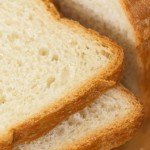Use bread and water to grow various types of mold and learn about bacteria.
What you’ll need
- Sliced white bread without preservatives (check the ingredients for sodium propionate)
- Ziploc bags
- An eyedropper or a teaspoon
- A Sharpie pen
How to do it
- Start with preservative-free bread. Mold grows from spores (the mold equivalent of plant seeds) that are already present on the bread.
- To start your mold garden, put five to ten drops (or one teaspoon) of water on a piece of bread. Store it in a Ziploc bag in a warm place.
- Next, think of clean- and dirty-looking areas. (The sole of your shoe? The floor? A door knob?) You can collect mold and bacteria from any surface by rubbing a slice of bread on it. Wipe a few pieces of bread on different surfaces, add water, and store in a Ziploc bag. Write down where you sourced your bacteria for each specimen.
- As your experiments grow, write detailed observations each day. Note the similarities and differences between your specimens. Look for patterns. After a week, you should notice fuzzy white, black, orange, or green spots on the bread. Green mold is typically Penicillium (from which penicillin is made).
- Caution: Don’t open the bags. Some people have allergic reactions to mold!
Questions to answer
Which specimen grew the most colorful mold? Why do you think that is?
What other surfaces would you try collecting bacteria from next? Why?






